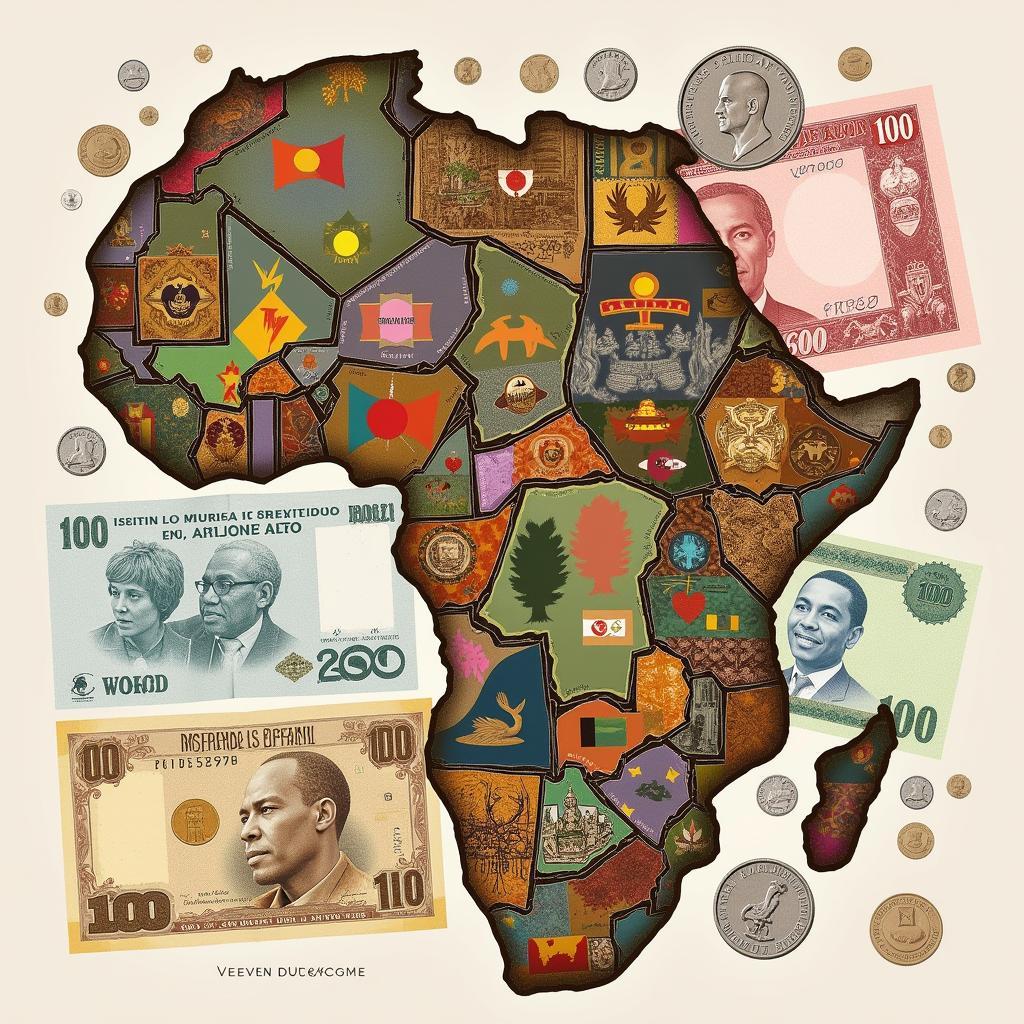Exploring African Country Flags: A 2019 Perspective
African country flags are more than just colorful emblems; they are symbolic representations of each nation’s history, culture, and aspirations. Understanding these flags offers a unique glimpse into the diverse tapestry of the African continent. This article delves into the significance of African country flags, providing a 2019 snapshot of their symbolism and historical context.
The Rich Symbolism of African Country Flags
Each African country’s flag tells a story, often reflecting the struggles and triumphs of its people. The colors, symbols, and designs are carefully chosen to represent national identity, values, and hopes for the future. Studying these flags reveals a fascinating narrative of independence, resilience, and cultural pride. From the Pan-African colors of red, yellow, and green to unique symbols representing local flora and fauna, each flag offers a visual representation of a nation’s identity.
Understanding the Meaning Behind African Country Flags in 2019
In 2019, the landscape of African flags remained largely unchanged, reflecting the established identities of the continent’s nations. This period offered a moment to reflect on the enduring power of these symbols and their continued relevance in representing the hopes and aspirations of African people. Examining the flags in this context allows us to appreciate their historical depth and understand the messages they convey to the world.
Many flags feature colors that symbolize important aspects of the nation. Green often represents the land and agriculture, while gold or yellow can symbolize mineral wealth or the sun. Red can symbolize the blood shed for independence, while black can represent the people. For instance, the Ethiopian flag, with its green, yellow, and red stripes, embodies these Pan-African colors, symbolizing unity and prosperity.
The inclusion of specific symbols further enhances the meaning of the flags. Stars often represent hope or unity, while animals can symbolize strength or national heritage. The Ugandan flag, for example, features a grey crowned crane, the national bird, symbolizing national pride and elegance.
Some flags also incorporate symbols that reflect the nation’s history or religion. The Algerian flag, with its green and white stripes and red crescent and star, reflects the country’s Islamic heritage.
African Country Flags: A Window into History
The designs of many African country flags are directly linked to their colonial past. The adoption of new flags following independence often marked a significant break from colonial rule and symbolized the birth of a new nation. Understanding this historical context is crucial to appreciating the full significance of African flags.
Post-Colonial Influences on Flag Design
The legacy of colonialism is evident in some flag designs. However, many African nations have consciously chosen designs that celebrate their pre-colonial heritage and embrace their unique cultural identities. This conscious effort to reclaim their visual identity through flag design is a testament to the continent’s resilience and determination to forge its own path.
“African flags are powerful statements of self-determination,” says Dr. Anika Nkosi, a renowned expert in African history and symbolism. “They represent the rejection of imposed identities and the embrace of a vibrant and diverse future.”
Conclusion
African country flags in 2019 stood as powerful symbols of national identity, historical narratives, and aspirations for the future. By understanding the intricate details and symbolism woven into each flag, we gain a deeper appreciation for the rich cultural tapestry of the African continent. Exploring these flags provides a valuable insight into the heart and soul of each nation, revealing stories of resilience, independence, and unwavering hope.
FAQ
- What are the Pan-African colors? (The Pan-African colors are red, yellow, and green, often found in African country flags, symbolizing unity and liberation.)
- What does the star on many African flags symbolize? (The star frequently symbolizes hope, unity, and guidance for the future.)
- Why are some African flags similar? (Some similarities in African flags can be attributed to shared historical experiences, Pan-African ideals, or regional influences.)
- What is the significance of animal symbols on African flags? (Animals featured on flags often represent national heritage, strength, or specific cultural values.)
- How do African flags reflect the continent’s history? (African flags often reflect the history of independence, the struggle against colonialism, and the embrace of unique cultural identities.)
- What is the importance of understanding African flag symbolism? (Understanding African flag symbolism provides insights into the values, history, and aspirations of each nation.)
- Where can I learn more about the specific meaning of individual African country flags? (Further research can be conducted through online resources, encyclopedias, and books specializing in African history and symbolism.)
Need assistance? Contact us 24/7: Phone: +255768904061, Email: [email protected], or visit us at Mbarali DC Mawindi, Kangaga, Tanzania.


